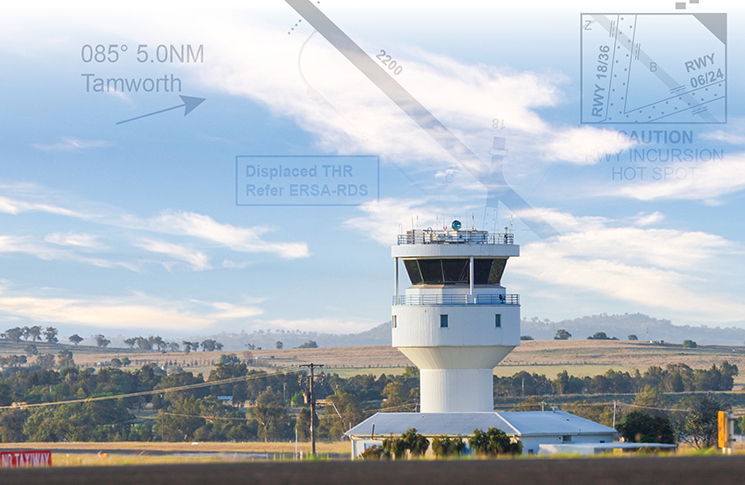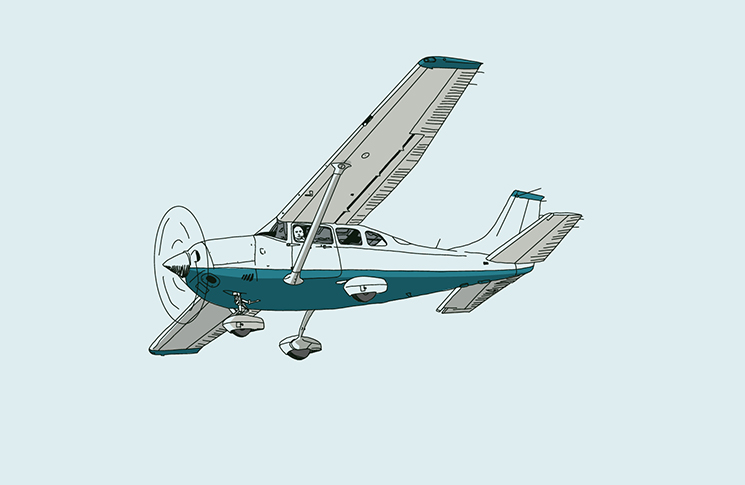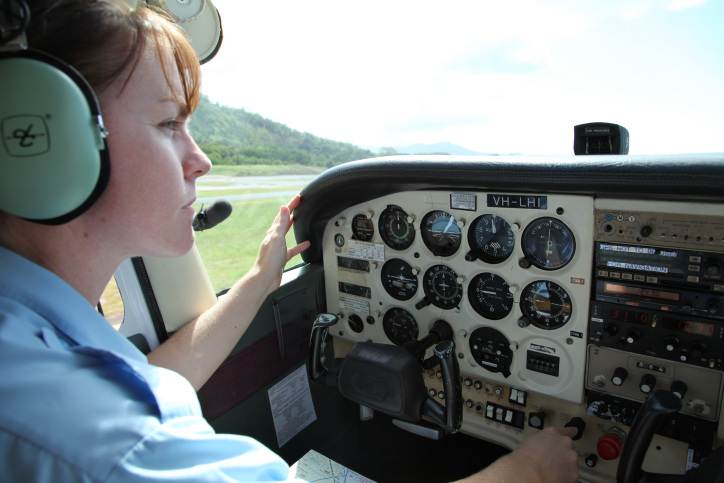Controlled aerodromes are not my native pilot haunt although I’ve flown into and out of a few in past years. Yes, I still worry if I’ll do all the right things for controlled airspace (CTA) but I also enjoy the experience.
It’s great having someone to contact on the radio who knows what I’m doing, where I’m going and crucially, where everyone else is in the zone. However, being comfortable in CTA is no panacea for human error – something I discovered seconds after departing Tamworth!
It was my first time at the aerodrome. I’d thoroughly read the 4 pages of ERSA instructions, noting the detailed departure procedures. I confirmed my destination airport was within the 160R to 295R zone, which meant a Gate West departure.
I determined the runway required and checked the taxiways I’d need. I noted the ground and tower frequencies, obtained the ATIS information, noted my first heading and the altitude for departure.
I taxied without incident to runway 30L, took off and was cleared for a left crosswind departure to Gate West. I wasn’t stressed, I like CTA.
I glanced down at my notes for my first heading – 105 – and began the turn. (If you know Tamworth, you’ll know that’s nowhere near correct for a departure from 30L to Gate West!)
I banked left and kept turning. And turning. Something started to gnaw at my gut. Three things went through my head: ‘Trust the numbers’ (which would normally be due to wind affecting the heading); then ‘Strong winds weren’t forecast’ and then ‘Did I forget to set my directional gyro?’
I guess it was a full 5 seconds before the truth dawned on me. I had looked at the line of numbers on my plan that showed airspeed – 105 knots! I was well off track and heading straight into the arrivals track from Duri Gap!
It took me a few more seconds to process that, after departing on a left crosswind from 30 – that is, on a heading of about 200 – I should have turned right from crosswind to head west towards Gate West. As soon as this occurred to me, I banked right, taking about 30 seconds to get back on (what I hoped was) the correct heading.
That minute of my pilot life wasn’t fun. And I couldn’t believe I didn’t get ‘the’ radio call that no pilot wants to hear in CTA. Perhaps I hadn’t blundered as far off track as I thought. Perhaps it had been a quiet day and tower had seen me correct quite quickly, even though it felt like an eternity.
I revisited the ERSA and my plan and found I’d made not one, but 2, significant mistakes.
After landing, I revisited the ERSA and my plan and found I’d made not one, but 2, significant mistakes.
What I learnt that day was the importance of spending quality time with the ERSA, a good departure briefing and cross-checking your departure plan. ‘Do some dummy checks, you dummy!’
Tower guidance
Not entirely a dummy, I contacted Tamworth tower for some advice. Should I have used the radio immediately? Did I do the right thing by simply correcting my track? What if, by doing so, I’d turned ‘into’ traffic?
Tamworth ATC gave advice that it’s preferable to say ‘disoriented and need track guidance’ or something similar. However, if the controller notices the pilot correcting and there is no other traffic around, they will generally let it run. Unfamiliar or inexperienced pilots may get flustered and make a further error if ATC says something when it is no longer necessary. Of course, if it was safety critical, they would have said something.
They reminded me to check the VTC before flying. The Gate South and Gate West departure tracks and the Duri Gap inbound track are heavily dependent on visual points; therefore, being familiar with Fullwood Hill and the power lines (the bit I’d missed in the ERSA) for a Gate West departure is very important.
Instructor advice
And because I’m not afraid of looking like a dummy, I also asked an instructor with local knowledge for a refresher about departure briefing from controlled aerodromes.
Tristan Cheam is a commercial pilot and instructor and the operations manager for SFC Pilot Academy at Tamworth, with a background in operational and systemic compliance and aviation safety management systems. Unruffled about my error, Cheam related an incident with a student pilot.
‘We were in Class Charlie and I gave the student a diversion,’ Cheam says. ‘I said, “I don’t feel like going to Mudgee, take me north.” The student put a heading into the plan, requested everything beautifully from tower, but didn’t reality check his heading. Instead of 359, he had put a heading of 059.’
Cheam says a departure briefing is always important, whether you are at a controlled or non-controlled aerodrome. ‘It gives you that situational awareness of where you are going and what you’re going to do to get there,’ he says.
A departure briefing is aways important, whether you are at a controlled or non-controlled aerodrome.
He uses the CTWO+ method to highlight threats – chart, terrain, weather, operational, plus (other threats not listed).
He does 3 checks, with the first during planning. ‘I have a departure checklist built into my EFB,’ he says. ‘And if it’s on paper, I highlight the tracks, the key points, the headings and do a dummy check on the headings.’
On the tarmac before getting in the aircraft, Cheam does a ‘stand back and look’ check to verify what he’s planned.
‘I ask myself, “Where am I going and how am I getting there?’” he says. “‘Where do I taxi? How and where do I depart the circuit? What is my first track? Where will I be heading? What direction will I turn from departure? At what altitude will I track? What is the airspace in front of me?” And, importantly, “Does what I am planning make sense?’”
Then Cheam pre-flights, gets in the aircraft, does the maintenance and logs, checks the charts and goes over the CTWO+ again.
‘I’ll cross check my mental plan against my EFB, put my first heading on the bug, look at the bug and say, “Does that track make sense?’”
In my case, a heading of 105 clearly didn’t make sense – that’s not anywhere near west!
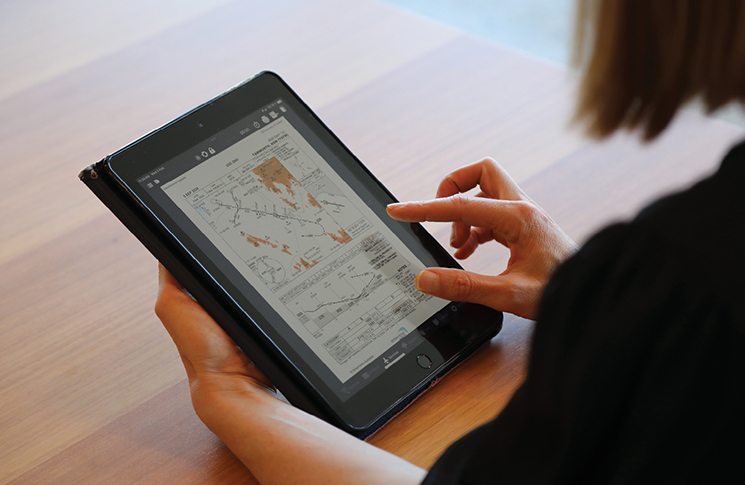
Standardise, verbalise, visualise
The complexity of controlled aerodromes and airspace mean a thorough departure brief is an important part of any tower-controlled departure.
After the Tamworth incident, I resolved to standardise, visualise and verbalise my departure briefings and to mentally ‘walk through’ where I needed to be, just like a rehearsal for a show. (There are good reasons airshow formation teams physically and mentally ‘walk through’ their displays on the ground; not only can it highlight discrepancies in the display plan, but also helps with cognitive processing and muscle memory. Visualising the plan before a display is key to their safety in the air.)
Studies have shown that verbalising can reinforce memory, assist with processing and help identify omissions or errors. Hearing a voiced plan (even with our own voice) prompts the memory to process it again, recalling other related procedures or items that might assist us to cross-check our plan. It helps our brain prepare for the upcoming tasks and increases situational awareness.
Pilots love acronyms (don’t we?). Along with checklists, they help us standardise procedures. Along with the CTWO+ method, the AWARE acronym, often used for threat analysis, can also work for a departure brief:
- aircraft: prepped and loaded properly. And Am I Safe?
- weather: at departure, en route, at the destination
- airport: taxiways, hotspots, runway, wind, frequencies, clearances, traffic
- route: circuit procedures, departure routes, terrain, heights, hills
- emergencies: taxiways, rolling, take-off, below 1,000 feet, above 1,000 feet.
A heading of 105 clearly didn’t make sense – that’s not anywhere near west!
Here’s my new format for a tarmac departure briefing:
As I’m talking to myself, I look towards where I want to go, both the taxiway and departure direction. I focus and visualise, moving my finger over the ERSA runway/taxiway images, VTC for terrain and key points, checking the more specific information and my notes for departure as I go through the AWARE brief.
‘Okay, my aircraft is ready and so am I. I’ve checked TAF, GAF and METAR and the weather is OK for this flight, here, along and there. Have I got ATIS? Yes – wind is from the south for take-off.
‘At this aerodrome, I’ve checked the NOTAMs. Ground frequency is x, tower is y. I’ll ask Ground for clearance for taxiway K for runups. Then ask for clearance on taxiway L to holding point of runway 30L. Taxi for line-ups then taxi to holding point. Tell Tower, ‘Ready Gate West.’ When cleared, it’s a left-hand circuit on 30L.
‘My route is via Gate West, so I’ll depart on a left crosswind and find the east-west powerline, staying under 2,500¸feet. Once south of it, I’ll turn right and track west. I want to be heading ‘that’ way (looking and even pointing in a westerly direction – studies also show that even small physical movements while concentrating helps us process, which is why the ‘pronounce and point’ checklist method was developed). At 5 nm out, turn slightly right again to track direct to Gate West, staying under 3,000 feet AMSL. Tamworth town should now be behind me at about 6 o’clock. As per the ERSA, a departure report is not required and there is also no need for departing airspace call. Once I’m there, I’ll just change frequencies when I’m clear of controlled airspace.
‘And then I’d run through emergency procedures.’
Rehearse
It’s like walking through the whole story, right? A rehearsal of sorts, which is exactly the point. A story that checks and sets expectations for what’s about to happen.
In aviation, there isn’t any room for error at controlled aerodromes. The types of mistakes I made in my plan that day could just as easily have been in any part of it.
A thorough, open-minded departure briefing might take one or 2 minutes. I reckon it would have saved me at least that time fixing what had gone wrong in flight, as well as the stress, the possibility of compounding the errors due to that stress and the irritation of having to admit to mistakes. Time well spent, I reckon.
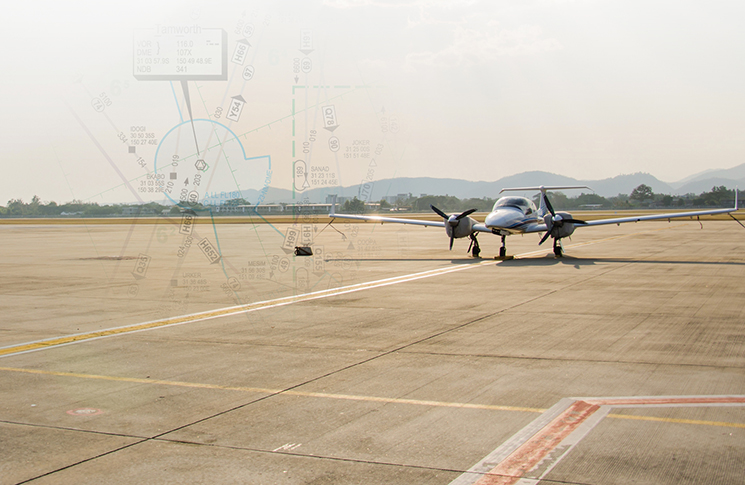
 Controlled airspace and aerodromes is one of the special topics on our Pilot safety hub. Refresh your knowledge at casa.gov.au/pilots.
Controlled airspace and aerodromes is one of the special topics on our Pilot safety hub. Refresh your knowledge at casa.gov.au/pilots.

